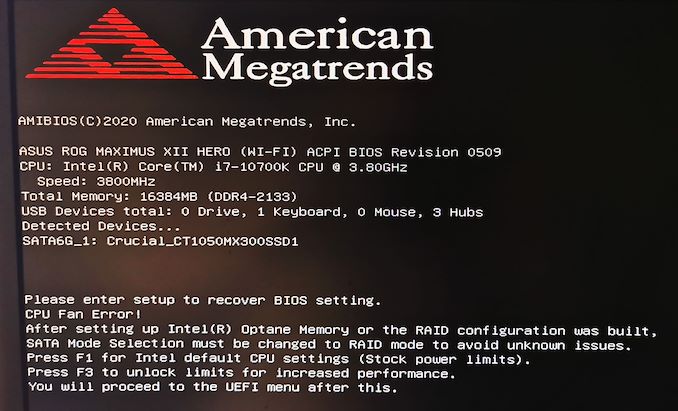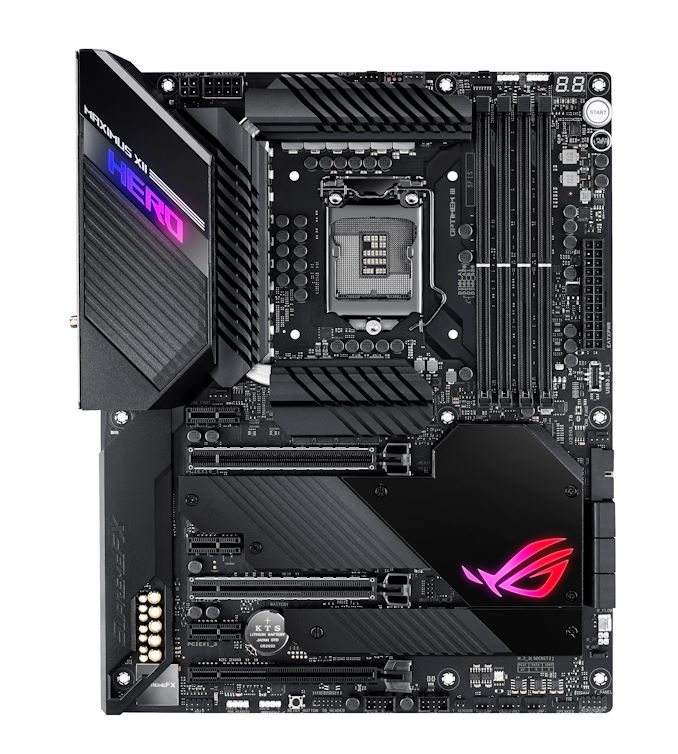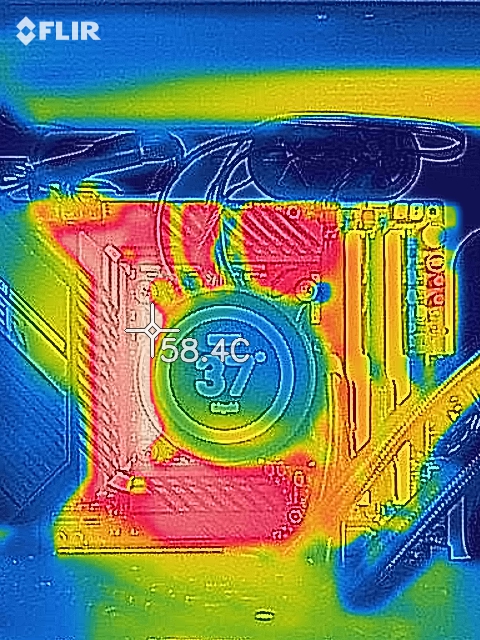ASUS ROG Maximus XII Hero Wi-Fi Review: The Tale of Two Motherboards
by Dr. Ian Cutress & Gavin Bonshor on June 11, 2020 11:45 AM EST- Posted in
- Motherboards
- Intel
- Asus
- ROG
- 5GBase-T
- Z490
- 10th Gen Core
- Comet Lake
-What's-Inside-the-Box_678x452.jpg)
Some of the recent discussions around motherboard design are whether the motherboard manufacturers are actually adhering to the CPU vendor specifications. If a motherboard manufacturer improves the base power delivery and cooling, should they be allowed to go beyond Intel’s suggested turbo power limits, for example? The question is actually rather moot, given that the vendors have been doing this for over a decade in one form or another, so varying degrees of extreme. As this practice has come more into the public light, especially with Intel’s high-end processors going north of 250 watts, companies like ASUS have come under increased scrutiny. That is why, at least with the Maximus XII Hero we are testing today, ASUS offers two options on the first boot: Intel Recommended, and ASUS Optimized.
ROG and Split Personalities
The fact that ASUS are offering users the difference between Intel Recommended and ASUS Optimized at first boot is rather intriguing. For sure it is a clear definitive statement that says that ASUS acknowledges that some users might be concerned about not following Intel guidelines, and the best people to know how do go above Intel’s guidelines are the enthusiasts that build systems on ROG. It’s a great way to provide base line and a boost line of just how far a product has improved upon Intel’s recommended values.
The worry comes when the board is to be used by a non-technical user. If they are unaware of the concept of going beyond Intel specifications, then they may not take advantage of the ASUS optimized values, aside from better thermals at the Intel specifications.
Nonetheless, it does mean that ASUS’ motherboards now have split personalities. Should the Maximus XII Hero now become donned in black, and called the Maximus XII Villain? [Hey ASUS, that’s a fun product idea. I’ll take 10%.]
The Hero sits in the middle of ASUS’ ROG Z490 range, despite being $399, but offers a substantial power delivery heatsink arrangement as well as coverings for the rear panel, chipset heatsink, and coverings for the onboard three M.2 slots. Connectivity is substantial, with a 5 GBase-T controller, an Intel I219 gigabit Ethernet, and Wi-Fi 6 as well. There’s even a USB 3.2 Gen2.2 20 Gbps connection on the back, among a myriad of other USB connections.
In our benchmark suite, we probed both the Intel Recommended settings as well as the ASUS Optimized selection. It was clear that that addition of those optimized settings gives the system a good boost in an array of benchmarks, but it is also clear that because other motherboard vendors are implementing their optimized values by default that most motherboards are competitive with each other anyway. For our load testing, we saw a +2% rise in a fully multithreaded benchmark with slightly lower power under the ASUS Optimized conditions.
The Hero scored obvious wins in our boot time test, our new NAMD test, and took our Core i7-10700K to 5.1 GHz before experiencing any throttling. The automatic overclocking was actually really good with load voltage compared to some others we have tested.
We pushed on to 5.2 GHz, just to see how the power delivery was holding up. The thermal results from the motherboard were very good on our probes, showcasing that the main limiting factor here for overclocked processors is going to be the CPU instead.
Naturally, motherboards over $300 should be viewed with suspicion. Normally motherboards priced above this are attached to some sort of gimmick, such as 20 SATA ports or a pre-fitted liquid cooling block. For the Maximus XII Hero, there are a number of premium components and features that make this a high-end board, and ultimately the goal here is to provide a good underlying base for any system. The Hero is really built for the overclockable processors though.
Motherboard Tested by Gavin Bonshor
Overview, Visual Inspection, and Conclusion by Ian Cutress.
Other pages written by Gavin Bonshor













29 Comments
View All Comments